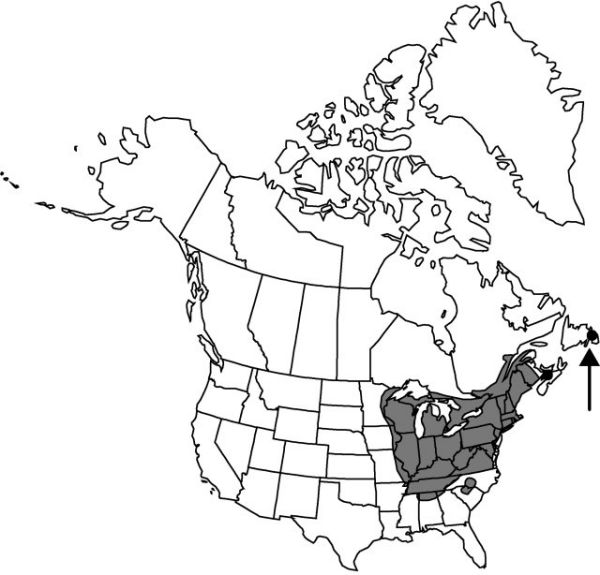Erythronium americanum
Bot. Mag. 28: plate 1113. 1808.
Bulbs ovoid, 15–28 mm; stolons 1–3, common, mostly on 1-leaved, nonflowering plants. Leaves 8–23 cm; blade green, irregularly mottled, elliptic-lanceolate to ovate or elliptic, ± flat, glaucous, margins entire. Scape 10–18 cm. Inflorescences 1-flowered. Flowers: tepals yellow, sometimes tinged light to dark purple-red abaxially, sometimes with reddish dots adaxially, strongly reflexed at anthesis, lanceolate, 20–33 mm, inner with small auricles; stamens 9–15 mm; filaments yellow, lanceolate; anthers yellow, chestnut-brown, or lavender; pollen yellow or brown; style deciduous or base forming small apiculum, greenish yellow, 5–11 mm, swollen distally or ± terete; stigma lobes erect or recurved, 1.5 mm. Capsules held erect or at least off ground at maturity, obovoid, 12–15 mm, apex rounded, truncate, or apiculate. 2n = 48.
Distribution

e North America
Discussion
Varieties 2 (2 in the flora).
Erythronium americanum is a very common and widespread species, particularly in northeastern North America, becoming less frequent towards the southern and western limits of its range. Nonflowering plants far outnumber flowering ones in most populations because of their extensive stolon production. Plants with brown anthers have been called forma castaneum L. B. Smith.
Selected References
None.
Key
| 1 | Capsule apex rounded, truncate, or short-apiculate; stigma lobes erect, not grooved; widespread in ne United States | Erythronium americanum subsp. americanum |
| 1 | Capsule apex distinctly apiculate; stigma lobes recurved, grooved distally; n Alabama, Georgia, ne Mississippi, Tennessee | Erythronium americanum subsp. harperi |
"broad" is not a number."thicker" is not a number.